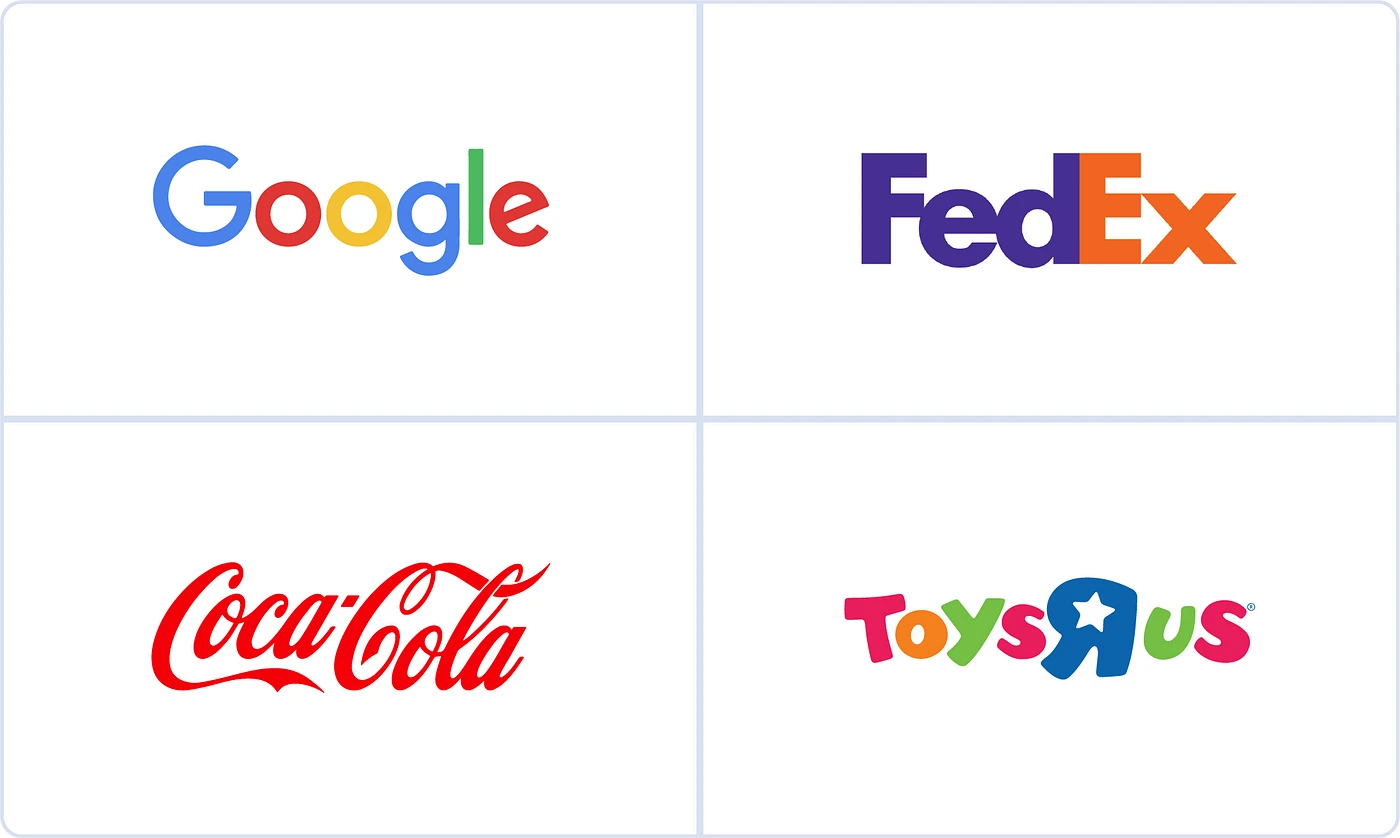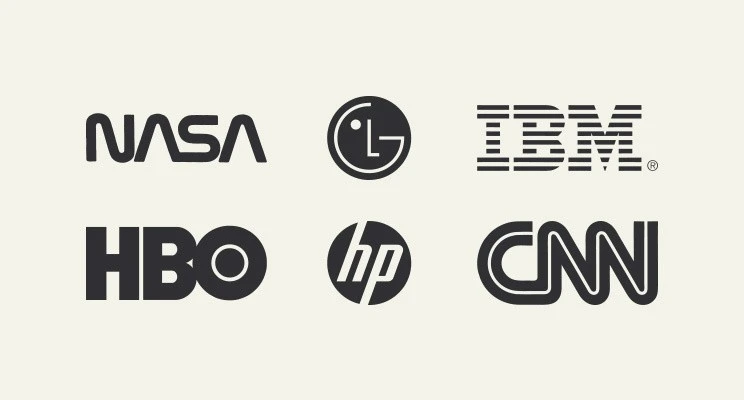
In today’s competitive market, the logo is not just a symbol, It is the identity of your brand. A well-designed logo conveys the core values of your company and mission. If you are looking for custom logo designs for embroidery, whether for uniforms, hats, or other apparel, understanding the different types of logos will help you choose one that fits your brand.
At True Digitizing, we help businesses bring their logo designs to life through custom embroidery digitizing services. Whether you have a complex combination mark or a simple wordmark, we digitize your logo to suit all your branding needs. But first, let's discuss the various types of logos and how to use them that could shape your brand identity.
A logo is a graphic symbol or emblem representing a company, product, or brand. It’s the first thing people notice and often forms a lasting impression. Logos are key visual branding elements, offering a shorthand way to communicate your brand’s message and values.
Your logo is an important part of your overall brand identity. It establishes brand recognition, builds trust, and sets you apart from competitors. When your audience sees your logo consistently across different platforms, whether it’s a website, business card, business name, or embroidered on a shirt, it strengthens brand recognition.
In today’s world, logos must be adaptable. Whether on digital screens or printed on apparel, the right and best logo style will leave an impactful mark. That's where choosing the correct type of logo for your brand becomes crucial.
For companies looking to customize their items with logos, whether through embroidery on shirts or caps. True Digitizing offers professional custom embroidery digitizing services that ensure your logo appears sharp and impactful.There are various types of logos, each with its own strengths. Let’s explore the most common logo styles and their importance in branding.
Combination logos are highly versatile. They can be used across various mediums, including business cards, websites, and promotional materials. Because they incorporate both text visuals, they convey your brand message more effectively.
These logos may ideal for creating a solid visual identity. The combination of text and imagery makes it easier for consumers to recognize and remember your brand.
examples include Burger King and Lacoste, both of which utilize a combination mark to represent their brand.

Wordmark or lettermark logos consist solely of the company name written in a distinct font or style. They rely on typography to create a memorable image.
Wordmarks are best suited for businesses with unique or short brand names. They are good for making your brand name stand out without using any logo symbols or icons.
Wordmark logos ensure that your brand name is front and center. This is especially important if brand recognition is a primary goal.
Examples: Famous wordmark logos include Coca-Cola and Google.
3: Lettermark Logos Image Source
Image Source
Lettermark logos, also known as monogram logos, use initials or abbreviations of a brand’s name. They simplify a longer name into a visually appealing graphic.
Lettermarks are perfect for companies with long names that want to create a simpler, cleaner look. They work well for creating a recognizable, professional image.
By simplifying complex names, lettermarks make brands easier to remember and identify.
Examples: Think of IBM, NASA, and HBO, which all use lettermark logos to create a memorable presence.
Similar to lettermarks, monogram logos use overlapping letters or initials to create a cohesive symbol.
Monogram logos are best for brands looking to create a refined, professional image. They work especially well for fashion, luxury, and personal branding.
Monogram logos allow brands to have a distinctive mark that can be easily applied to various materials, from packaging to apparel.
Examples: Louis Vuitton and Chanel are iconic examples of monogram logos.
Letterform logos are simplified to a single letter, typically stylized to create a unique visual representation of the brand.
These logos are best for brands with strong recognition, where a single letter can instantly reflect the brand.
Letterform logos are minimalist. They are easy to use across different branding materials, from business cards to embroidered merchandise.
Examples: McDonald's famous "M" and Netflix’s "N" are standout examples of letterform logos.
Symbol logos use icons to represent a brand. These logos reflect the brand message, without text, to convey the brand message.
Pictorial logos are the best for companies that are easily recognized by a specific image or icon.
These logos are highly memorable and are especially effective for global brands, where language barriers might exist.
Examples: The Apple logos is a perfect example of symbol logos.
Abstract logos use geometric forms or unique shapes to create an image that represents the brand without being overly literal.
Abstract logo marks are perfect for brands looking to create a modern and versatile image that stands out in public.
These logos allow for more creativity, as they are not bound by traditional design rules. They help convey a brand’s values or mission artistically.
Examples: The Pepsi logo is an example of an abstract logo design.
Mascot logos feature a character or illustrated figure that represents the brand, giving it a more personable and relatable identity.
Mascot logos are often used for brands targeting families or children. They are effective in creating a fun and approachable image.
Mascots can be the identity of a brand and help in establishing a more relatable and engaging presence.
Examples: Brands like KFC’s Colonel Sanders or the Pillsbury Doughboy use mascot logos effectively.
Emblem logos feature text inside a symbol or badge. They often have a traditional, formal look.
Emblem logos are usually used by schools, organizations, and government bodies. They give a brand a sense of authority and history.
Emblems are strong representations of trust and reliability, making them great for formal institutions.
Examples: Harley-Davidson and Starbucks are well-known for their emblem logos.
This logo style places the brand's letters within a geometric shape to create a visually appealing design.
These logos are best for companies that want to combine both simplicity and creativity.
The structured design makes it easy for brands to have a consistent logo that fits various applications.
Examples: Examples include the BBC and Unilever logos.
Negative space logos creatively use the space around and between letters or images to create hidden images or meanings.
Negative space logos are ideal for brands that want to appear clever and innovative.
These logos engage the audience by making them look twice and adding an element of surprise.
Examples: The FedEx logo is a famous example with its hidden arrow.
Dynamic logos change in look, adapting to different settings or contexts while maintaining the core brand identity.
These logos are good for brands that want to evolve with time and trends without losing their identity.
They give freedom and keep the brand fresh and relevant.
Examples: Google's changing doodle is an example of a dynamic logo.
3D logos use shading, gradients, and depth to create a logo that appears three-dimensional.
These are best for brands in industries like tech, gaming, or media, where modern, cutting-edge design is critical.
3D logos give a modern and innovative feel, making the brand stand out.
Examples: Brands like NVIDIA use 3D logos effectively.
Animated logos bring a brand’s logo to life through motion and movement.
Animated logos are perfect for brands that use video content or want to create a dynamic, engaging digital presence.
They grab attention and can be memorable, especially in online and video formats.
Examples: Many video production companies, like Pixar, use animated logos to introduce their content.
Choosing the right logo is key to building a strong brand identity. Know your industry, target audience, and brand values when choosing a logo. For example, a tech startup might lean towards an abstract logo, while a family restaurant may find a mascot logo more suitable.
To maintain consistency across all platforms, every brand should have these four logo variations:
Primary Logo: The main logo used on most branding materials.
Secondary Logo: A simplified version of the primary logo for smaller applications.
Icon or Mark: A standalone symbol or icon.
Logo Lockup: A combination of the logo and the brand name.
Nick William has been immersed in the world of embroidery digitizing for over 20 years, earning 25 industry awards throughout his career. As a 3rd generation embroidery expert, Nick’s journey started in his family’s workshop, where he learned the art of digitizing before the rise of modern software. He has worked with leading commercial embroidery businesses and has shared his expertise with over 75,000 home and professional embroiderers. As an author at True Digitizing, Nick is passionate about teaching others how to create beautiful, precise designs through easy-to-follow tutorials and expert advice.
Categories

6 Popular Types of Vector Files 2025
16-04-2025

How To Create A Vector File: Step-by-Step Guide
15-04-2025

What Is A Vector File? Everything You Need To Know
14-04-2025

Best Janome Embroidery Machines You Need to Check Out in 2025
11-04-2025

Custom Embroidery Digitized Designs For Hoodie Lovers
10-04-2025

Best Embroidery Patches For Your Clothes
10-04-2025

Professional Online Photo Digitizing Services Provided by True Digitizing
09-04-2025

Best Babylock Embroidery Machines For You
09-04-2025

Barudan Embroidery Machines: From Beginners to Professionals
04-04-2025

Custom Sweatshirt Embroidery Digitized Designs By True Digitizing
03-04-2025